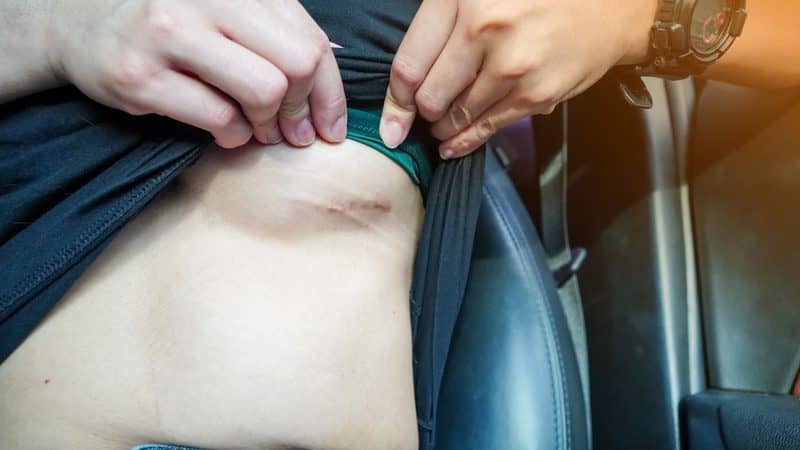By Constance M. Chen, MD, MPH
Patients thinking about removing their breast implants will likely have a few questions. For many people, one of the primary concerns is what their breasts will look like after explantation. The answer depends on many factors, and it’s important to understand how these details can affect breast appearance once the implants are removed.
The good news is that no matter how a patient’s breasts look immediately after surgery, they will almost always recover and look better in the long term—even if it takes several weeks or months for their breasts to snap back.
Implant Removal Considerations
Women have breast implants removed for various reasons. In some cases, it’s medically necessary, such as when their breast implants have become infected. Other women have implants removed due to pain, which can have many causes such as capsular contracture, leaking silicone breast implants, or any breast implant placed underneath the pectoralis muscle. Others remove their implants due to autoimmune issues such as breast implant-associated anaplastic large cell lymphoma or breast implant illness. Women may also remove their implants due to rupture, rippling, or shifting of their implant position.
No matter your reason for implant removal, there are numerous factors that will affect the appearance of your breasts after explantation.
How large are your breast implants compared to the amount of native breast tissue that you have?
If your breast implants are very large and you have very little natural breast tissue, then your breasts are likely to appear quite deflated, empty, and wrinkled immediately after surgery. This is because the breast implants will have stretched out your breast skin while compressing any breast tissue that you have. Once the implants are removed, the stretched-out skin may not be able to contract completely and the thinned-out breast tissue may not be able to make up for the empty space right away.
How much did you weigh at the time your breast implants were placed and how much do you weigh now?
If your breast implants were placed at a time when you weighed much less than you weigh now, then the additional weight you have put on may have added a proportional amount of tissue to your breasts. Thus, your breasts may look better than expected because you would naturally have larger breasts than when your implants were placed. If you weigh less than you did when your breast implants were placed, then some of the tissue from your breasts may have disappeared as well. Thus, if you have lost weight, your breasts may look more deflated than expected once your implants are removed.
How elastic is your skin at the time of explantation?
There are many factors that can affect skin elasticity, including genetics, age, and pregnancy status. Some people just naturally have more elasticity in their skin than others due to genetics. As we age, however, we all lose elasticity in our skin so that older people have less elastic skin than younger people—this is why skin droops and wrinkles with age. Pregnancy also stretches out breast skin and makes it less elastic. Thus, someone with less elastic skin will have a more deflated and deformed breast appearance after explantation, whereas someone with more elastic skin may look relatively normal after explantation.
The bottom line is that a person who has very large implants, very little breast tissue, who has lost weight since the breast implants were placed, and has undergone multiple pregnancies over decades may end up with breasts that look deflated, empty, and wrinkled. On the other hand, someone who has small implants, a lot of natural breast tissue, has maintained or gained a modest amount of weight since implantation, has had no pregnancies, and is young may not look very different at all before and after implantation. Other factors can also affect the ultimate outcome.
Another issue to keep in mind with implant removal is that the implant itself stretches out the breast skin and compresses the native breast tissue. Once the implant is removed, the skin will eventually contract, and the breast tissue will eventually re-expand. The changes in the breast skin and breast tissue will take place over several weeks and months, however, so it may take time for the ultimate appearance to become apparent. Often, the breasts will look extremely deformed immediately after surgery, but then look completely normal after several weeks or months as the body readjusts to its new state without breast implants.
If someone has gained a significant amount of weight or has become pregnant with breast implants, however, then the breast skin may have stretched irreversibly. If the breast skin has stretched and there is insufficient elasticity, the breasts may become permanently droopy. When the breasts are very saggy, some women may elect to have a breast lift (mastopexy).
If a woman has enough breast tissue at the time of implant removal, it is possible to do a mastopexy at the same time as the implant removal. If there is minimal breast tissue, however, she should wait for her skin to contract and her breast tissue to re-expand so there will be breast tissue to work with for a mastopexy. Either way, a mastopexy will involve additional scars to resect the excess skin and reposition the drooping breast tissue.
Finally, if someone undergoes implant removal and would like additional breast volume without using implants, it’s possible to undergo fat grafting. Fat grafting involves liposuction from other areas of the body, processing the lipoaspirate, and then injecting the processed fat into the breasts. Often, it is best to wait until after you have healed completely from the implant removal to decide whether or not you want to undergo fat grafting.
For starters, once your breast skin shrinks and your breast tissue re-expands, you may realize that you are happy with your breast appearance and that fat grafting is unnecessary. In addition, surgery causes inflammation, and the inflammation from the implant removal surgery may reduce the success of fat grafting.
Unlike breast implants, fat grafting is unpredictable, and it is expected that anywhere from 30%-70% of fat transferred will be resorbed and eliminated by the body. Liposuction itself can also be uncomfortable—especially in very thin women—so it is important to try to maximize fat graft “take.”
To achieve the desired volume, it may be necessary to undergo multiple rounds of fat grafting to build up the breast tissue. Each round of fat grafting should be separated by a minimum of three months so that the body can recover between surgeries. Once the fat graft has taken, however, the effects should be permanent as long as the patient maintains her weight.
Consult with Your doctor
If you have questions or concerns about what you can expect your breasts to look like after implant removal, talk to your surgeon. Together, you can decide on next steps, before and after surgery, based on your individual needs. By working with a board-certified plastic surgeon, you can minimize the risks and optimize your results for a full and healthy life.
Constance M. Chen, MD, MPH, is a board-certified plastic surgeon with special expertise in the use of innovative natural techniques to optimize medical and cosmetic outcomes for women undergoing breast and body restoration. She is clinical assistant professor of surgery (plastic surgery) at Weill Cornell Medical College and clinical assistant professor of surgery (plastic surgery) at Tulane University School of Medicine. Follow her at www.constancechenmd.com




